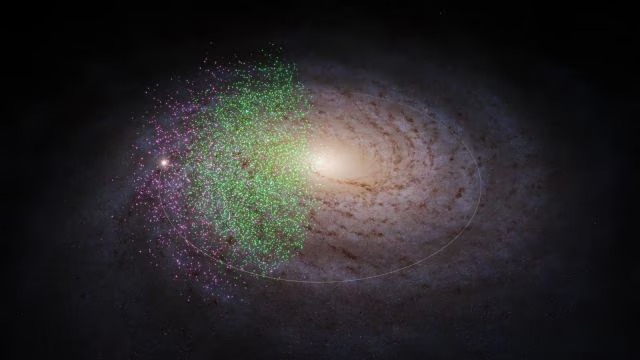The Max Planck Institute for Astronomy on Thursday announced that astronomers have discovered what could be the earliest building blocks of the Milky Way, named “Shiva” and “Shakti.” These seem to be the remnants of the two galaxies that merged between 12 and 13 billion years ago with an earlier version of the Milky Way, contributing to its growth.
Astronomers from the institute named the components Shakti and Shiva and identified them after combining data from the European Space Agency’s Gaia satellite and the SDSS survey. This can be thought of like finding traces of an initial settlement that eventually grew into a metropolitan city, albeit on a cosmic scale.
The collisions and mergers of galaxies put several things in motion. Each galaxy will carry its own reservoir of hydrogen gas and when colliding, these clouds are de-stabilised and many new stars will be formed inside. Of course, both the galaxies will have their own sets of stars before they collide and these “accreted stars” will only account for some of the stellar population that forms the newly-combined galaxy. The tricky part is identifying which stars came from which predecessor galaxy when the merger is done.
But basic physics provides the clues. When galaxies collide and their stars mingle, most of the stars retain some basic properties which are linked to the speed and direction of the galaxy they originally came from. Stars that were from the same predecessor galaxies share similar values of energy and what scientists call angular momentum, the momentum associated with their rotation. Both angular momentum and energy are conserved for stars moving in a galaxy’s gravitational field.
For this research, astronomers looked at Gaia data combined with stellar spectra data from the Sloan Digital Sky Survey. SDSS provided detailed information about the stars’ chemical compositions. “We observed that, for a certain range of metal-poor stars, stars were crowded around two specific combinations of energy and angular momentum,” said researcher
For their present search, Malhan and Rix used Gaia data combined with detailed stellar spectra from the Sloan Digital Sky Survey (DR17). The latter provided detailed information about the stars’ chemical composition.
“We observed that, for a certain range of metal-poor stars, stars were crowded around two specific combinations of energy and angular momentum. “Shakti and Shiva might be the first two additions to the ‘poor old heart’ of our Milky Way, initiating its growth towards a large galaxy,” said researcher Khyati Malhan, in a press statement. It was Malhan that named the two constituent galaxies Shiva and Shakti.




